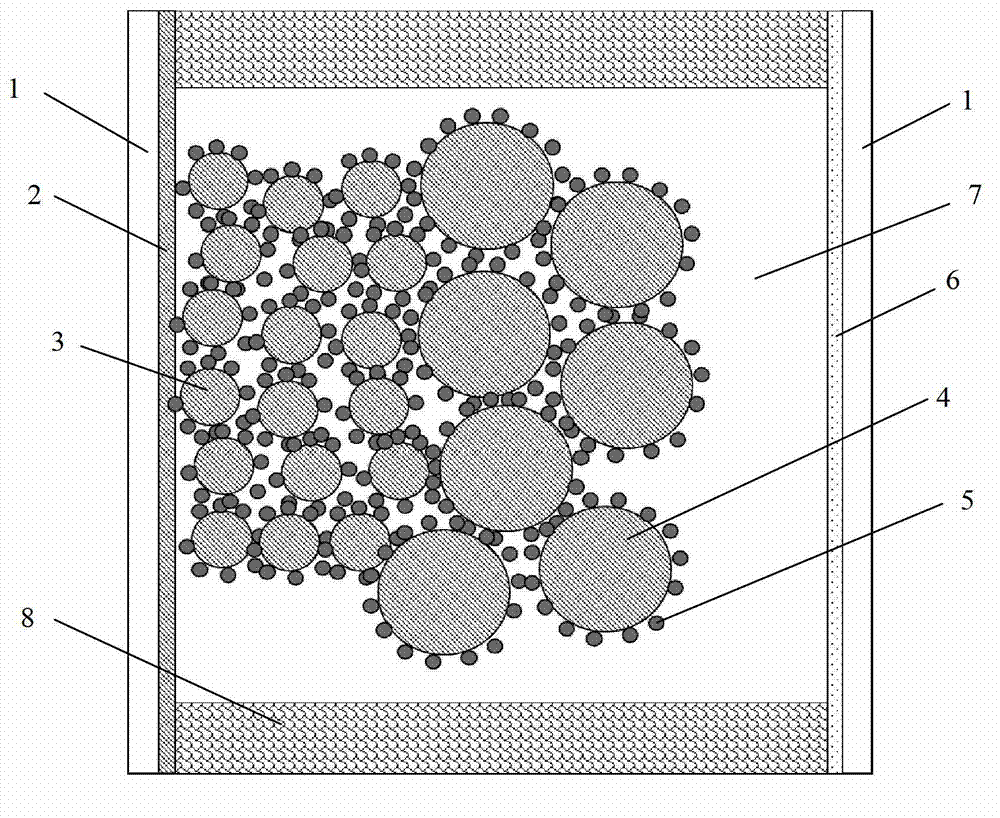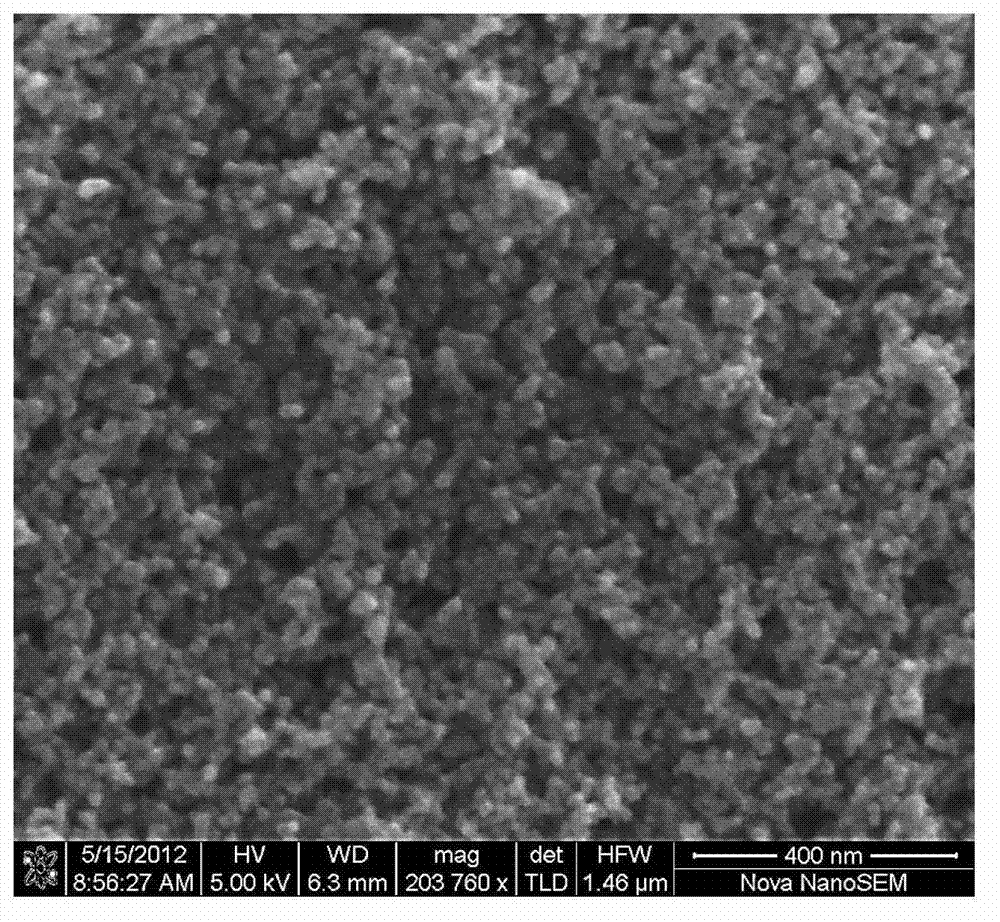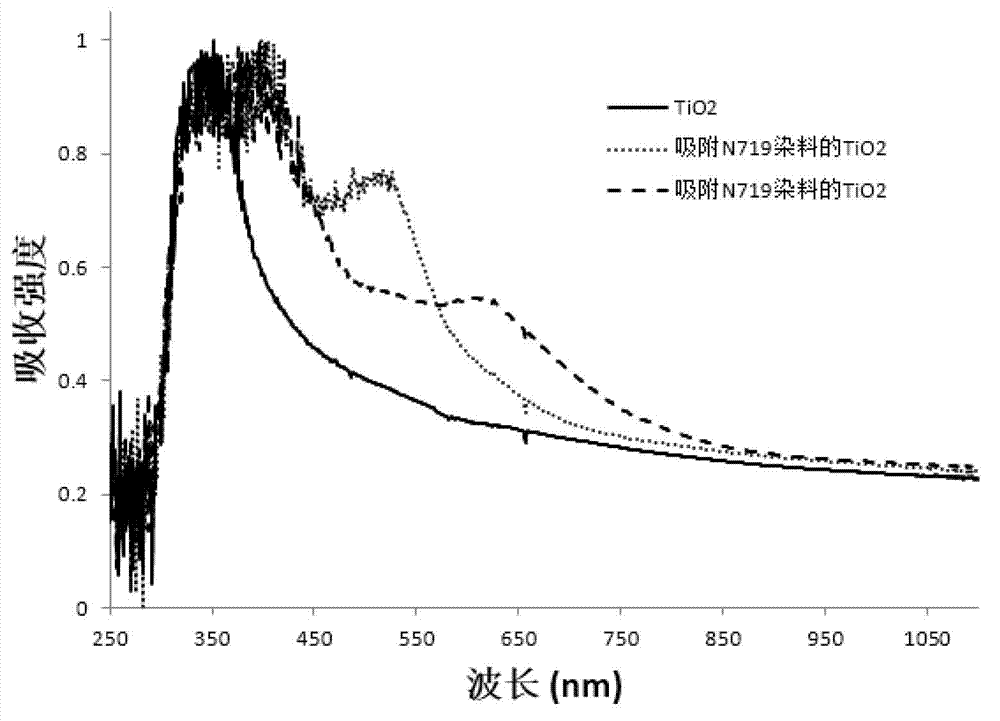Dye sensitization solar cell based on synergetic catalytic binary redox couple
A solar cell and dye sensitization technology, applied in the field of dye sensitized solar cells, can solve problems such as corrosion, shortening battery performance and life, and reducing the ability of dye molecules to absorb sunlight
- Summary
- Abstract
- Description
- Claims
- Application Information
AI Technical Summary
Problems solved by technology
Method used
Image
Examples
Embodiment Construction
[0023] The method of the present invention is described in detail through examples, but it does not constitute a limitation to the present invention.
[0024] (1) Device preparation
[0025] 1. Prepare dye solution. Weigh 35mg~95mg of N719 dye, dissolve it in 100mL ethanol, stir for 12~24 hours until fully dissolved.
[0026] 2. Preparation of substrate conductive glass and metal oxide photoanode. The substrate and transparent electrodes are made of FTO conductive glass with a thickness of 2.2mm and a surface resistance of 15 ohms, coated with TiO with a thickness of about 5~18μm. 2 The nanoparticle porous film is placed in a muffle furnace and sintered at a high temperature of 350°C~500°C for 30min~90min, and finally forms a nanoscale porous film. The microstructure shown by the scanning electron microscope is as follows: figure 2 shown.
[0027] 3. Put the prepared metal oxide photoanode into the dye solution and soak for about 12-48 hours.
[0028] 4. Prepare 4 electr...
PUM
 Login to View More
Login to View More Abstract
Description
Claims
Application Information
 Login to View More
Login to View More - R&D
- Intellectual Property
- Life Sciences
- Materials
- Tech Scout
- Unparalleled Data Quality
- Higher Quality Content
- 60% Fewer Hallucinations
Browse by: Latest US Patents, China's latest patents, Technical Efficacy Thesaurus, Application Domain, Technology Topic, Popular Technical Reports.
© 2025 PatSnap. All rights reserved.Legal|Privacy policy|Modern Slavery Act Transparency Statement|Sitemap|About US| Contact US: help@patsnap.com



